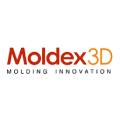When creating a new product, do you ever question its performance?
Will it break easily?
Also, is it too loud?
Does it tend to overheat?
What size of the motor is required?
How long can it be expected to last?
Do you need answers to some crucial questions, but physical testing takes too much time and money?
You might be looking for accurate, quick, and creative solutions.
If you’re working on creating a new product, Simcenter Mechanical simulation software can be beneficial. It lets you create and test a virtual product model before you build anything. This can save you a lot of time and money! You can use Simcenter Mechanical to try different designs and ensure your product works well. Plus, all your simulation data is kept in one place, making it easy to track everything.
Simcenter Mechanical simulation tools will be released simultaneously, including Simcenter 3D, Simcenter Nastran, and Simcenter MAGNET. This means engineers in various industries can simultaneously access the latest enhancements. These enhancements are designed to help engineers overcome the challenges in their respective fields.
Automotive applications
The car industry is undergoing many changes. Engineers need new and better tools to help them understand how their designs will perform. One of the most significant changes is the move towards electric cars, which affects everything from how the vehicle moves to how it sounds. Simcenter Mechanical simulation solutions have added new features to make it easier for engineers to work with these new technologies and ensure their designs work as intended.
Streamline the EV powertrain engineering workflow.
The car industry has a lot of buzz about making new electric vehicles. This is new territory for everyone involved, so how they design and build these cars can be challenging and efficient. Different teams work on other vehicle parts, using various tools or sharing information quickly. But with Simcenter Mechanical, they can make things simpler and more integrated by using a tool that helps them simulate and design different parts of the car in a more connected way.
E-motor multi-attribute design
When it comes to electric vehicles, everything starts with designing the motor that powers them. With Simcenter Mechanical, you can use a tool to create and simulate electric motors. This tool is based on templates and can help you automate the selection process. Using it lets you test hundreds or even thousands of design options quickly and efficiently!
E-motor detailed analysis
Simcenter 3D helps analyse motor performance in 2D or 3D and assesses how it handles different physics, such as heat.
Transmission simulation
Simcenter 3D analyses motor and transmission performance. It creates models and simulates gear geometry to learn about load and gear sound, essential for quiet electric vehicles.
.
Acoustic simulation
Simcenter 3D uses multibody simulation to analyse vibrations in the gear house structure, helping with sound analysis.
Acoustic radiating surface
Car simulations are now more realistic with support for different materials in the cabin. This improves the accuracy of the sound experience for passengers.
Motion contact pattern display
Simcenter 3D has a new feature to check if your windshield wipers are working correctly. It uses a computer model to show how they move and how much force is applied. This helps ensure they cover the windscreen evenly.
Updated road contact algorithm for tire simulation
Simcenter Tire’s latest update improves tire-road interaction, leading to faster and smarter car computer performance. This results in a 45% performance boost, enabling real-time use of high-quality tire models in simulators and HiL systems.
Reduced order models and FRF data in assemblies
The updated Assembly Composer in Simcenter 3D has new testing tools that help engineers explore model variants more easily. Using physical test data, like FRF data, engineers can create more accurate models and test more design possibilities efficiently.
Aerospace applications
Engineers who design aeroplanes and rockets use simulation to test their designs before they build them. One helpful tool they use is Simcenter Mechanical. It has new features that make it faster and easier to calculate how safe a design is, especially for thin parts like aeroplane skins. It can also help engineers understand how the movement of liquid fuel in tanks can affect rocket launch.
Industrial machinery applications
When we buy a machine, we want it to work well for a long time without breaking down often. But the people who make the devices only sometimes have the time or money to test them in extreme conditions to make sure they won’t break down. Simcenter Mechanical has new features that can help predict how long a machine will last without needing an expert.
With Simcenter Mechanical, you can better understand how to spin machines work and evaluate any noise from electrical transformers.
Applications across industries
Whether you work in the car, boat, or consumer goods industry, simulation engineers have a lot of tasks and processes to deal with each day.
Fortunately, Simcenter Mechanical now has new tools that will make it easier and faster to simulate the build process for additive manufacturing. These tools can also help you prepare and process your FE models more efficiently before and after simulation.




